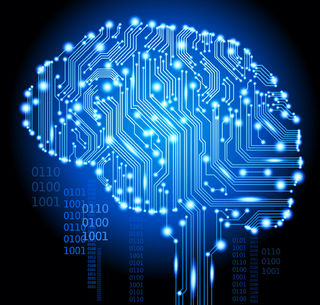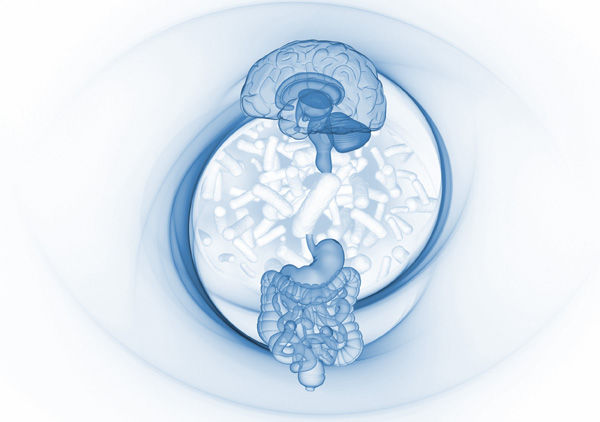
Persuasion
There Is More Than Butterflies in Your Stomach
Why the gut and its microbes may influence how we feel and think.
Posted August 25, 2016

We have all have experienced a variety of gut feelings and gut reactions associated with different emotions, including anxiety, anger, and sadness. The English language if full of expression like “butterflies in the stomach,” “gut wrenching decisions,” “knots in the stomach,” “pain in the butt” and “scared s***less” are just a few examples. Similarly, almost everybody has made gut-based decisions in their lives, often when a lot was at stake, or when the decision was of great personal importance. And there is hardly a day on which a prominent politician, athlete or entertainment celebrity does not make reference to their gut feelings. But despite this tight link between our subjective emotional experiences and the gut in our language, most people have never seriously thought that there may be a neurobiological basis underlying these associations. Even more outlandish and provocative is the recently proposed idea that the 100 trillion microbes living in our gut may have a word to say in this mind-gut conversation!
However, unnoticed by the media and the awareness of the general public, a lot of science has accumulated over the past 25 years that clearly demonstrates a close bidirectional interactions between the brain and the gut. (Mayer. Nature Reviews Neuroscience, 2011 ). When we experience an emotion, the brain talks to the gut, and the gut responds back to the brain. The top down signaling can be viewed as the yang, the bottom up signaling as the yin of brain-gut interactions. Emotional responses of distinct brain networks result in autonomic nervous system activity, which is sent to multiple targets in the gut and adjust their activities: The blood supply, the enteric nervous system, the gut-based immune system and hormone containing cells in the gut. Within this assembly of gut-based cells, these nerve signals from the brain generate a mirror image of every emotion at the gut level, in a similar way as each emotion generates a distinct pattern of activities of our facial muscles, creating the characteristic facial expressions. The only difference is that while everybody can read an emotional facial expression, we are completely unaware of the emotion-related events going on in our gut.
On the other hand, a complex array of sensory mechanisms encodes this gut activity during emotional experiences and in response of the dramatic changes that occur in the lumen of the gut when we eat, when we are hungry and even when we sleep. Sensory nerve endings, hormone containing cells and immune cells in the gut layer that extend their tentacles into the gut lumen. Much of this sensory information about the state of our gut is transmitted back to the brain either through the bloodstream or the vagus nerve, into the same brain circuits that generated the emotion in the first place. Why does the brain need this “detour” through the messy world of the gut in order to generate our so cherished human emotions? Would a brain in a jar or the supercomputers of the future still be able to generate human emotions? The fact that a close link between the gut, the nervous system and responses to the environment has existed for billions of years of evolution, all the way back to the first primitive marine animals living in the vastness of the oceans, suggests this interactions must have a highly adaptive value.
The brain-gut loop and the reverberating activity within it is probably also responsible for the characteristic long lasting experiences of certain emotions, which often outlast the initial trigger. The engagement of the brain-gut loop may also play a role in the encoding of complex emotional memories each time we respond to a salient event in our environment. A lifetime of such memory encoding generates a vast database in our brain which we can access within seconds to make an intuitive decision based on our gut feelings. This database has been referred to as somatic markers by Antonio Damasio (better referred to as visceral markers), and the mechanism involved in such intuitive decisions as “as if loops,” not requiring the slow loop through the gut (Damasio. Descartes’ Error, Penguin Books, 2005). Searching for the right decision in this vast database can be compared to the activity of the search engines from Google and Amazon, which can assist in identifying personally relevant choices and making decisions (Mayer. The Mind-Gut Connection, Harper Wave, 2016).

If the gut were a simple pump as the heart, or a pipe like the blood vessels or a mechanical device like our muscles, this view of emotions as subjective experiences generated within the brain-body axis would be simple to comprehend and fairly straightforward. However, the gut is unique: Having the surface area of a basketball court, being studded with an enormous number of sophisticated sensors, being flooded with all kinds of foods which we ingest, it is our biggest interface with the external world. And most intriguingly, being the home of some 100 trillion microorganisms which live in synergy with our intestine most of the time, it receives an amazing amount of information from an invisible superorganism living inside of us from the day we are born to the time we die. As I discuss in my book The Mind-Gut Connection, we are at the beginning of our understanding how our food and these microorganisms influence the ongoing dialogue between our brain and the gut, and how this microbial influence affects our emotions and our cognitions.
While much of the current media hype and exaggerated claims about health promoting diets and food supplements targeted at the gut microbiota is not founded on solid scientific evidence, the realization of the intricate connections between our gut, its microbial inhabitants and our brain has the potential to revolutionize our concepts about the nature of emotions in health and diseases of the brain, including depression, anxiety, Parkinson’s disease and autism spectrum disorders.


